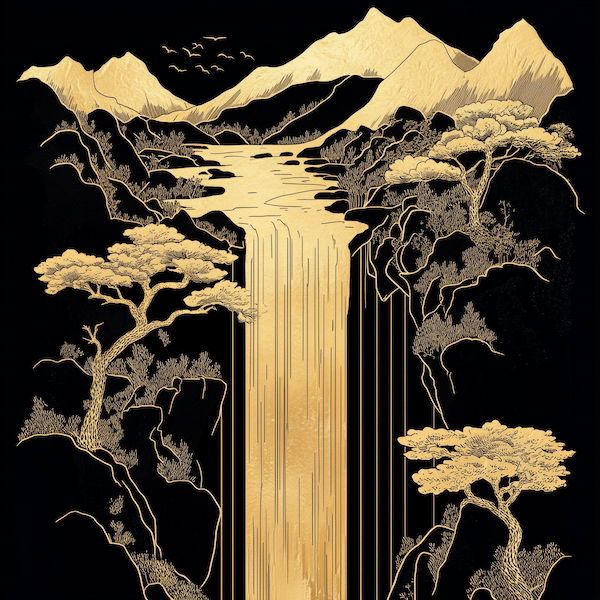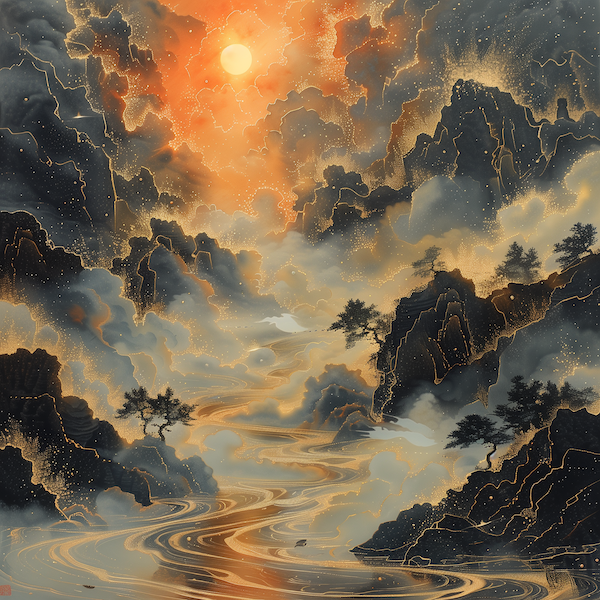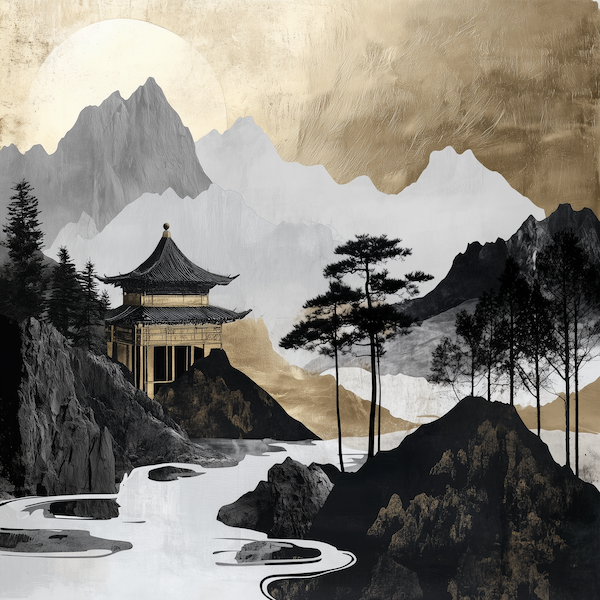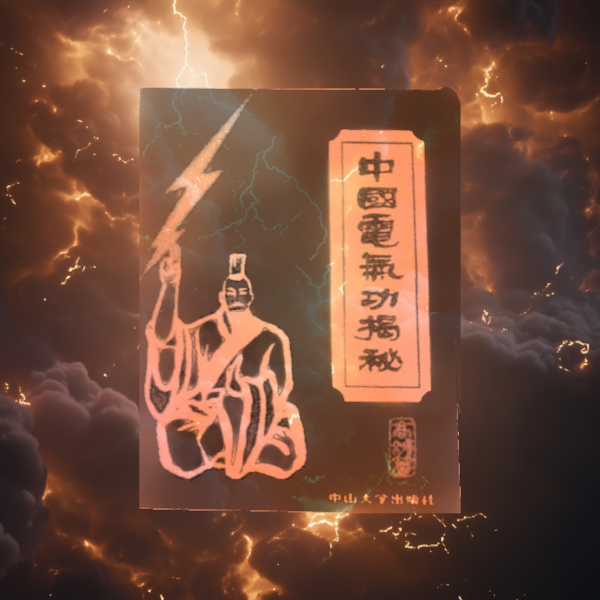-
Nourish and Store Energy for the Year to Come: Recipe for the Greater Snow 大雪 Solar Term
Da Bu Yang Cang Tang (大补养藏汤) might be translated as something like “Great Nourishing and Storing Soup” is a widely-recommended yangsheng (“nourishing life”) recipe for this time or year–starting from the Greater Snow (Da Xue 大雪) Solar Term (December 6th in 2024) and onwards for about the next month. This time of year to reduce excess physical exertion, increase stillness meditation and nourish the body’s storage capacity. Our Yang Qi has retreated to the interior and we want to carefully nourish it during this time. This soup nourishes the five internal “zang” organs: heart, liver, spleen, lungs, and kidneys. It is especially nourishing for the kidneys. It nourishes kidney qi,…
-
The Microcosmic Orbit
Below is a brief exploration of the Microcosmic Orbit, also known as the Small Heavenly Orbit. We will touch on its significance, history, key features, as well as different types of Microcosmic orbits and associated practices, and how it is used in different modes of practice (i.e. qigong/neigong vs dandao/neidan). This is not meant to be exhaustive and only briefly touches on some key points with a few instances of specific examples. The video form of this post can be found at the bottom of the page. The Microcosmic Orbit is the flow of Qi around the loop created by the Ren and Du meridians, but what is the significance…
-
Nuts: Wintertime Snack of the Immortals
“Ren you san bao jing, qi, shen You san zhong xianguo bu jing, qi shen de” (人有三宝精气神, 有三种仙果是补精气神的) People have three treasures: essence (jing), energy (qi), and spirit (shen). There are three kinds of xianguo “immortal nuts” that replenish jing, qi, and shen. Winter is the season for storage (cang 藏), storing jing (essence). Plants store much of their essence in nuts and seeds to prepare for spring. Nuts are ready to harvest in the fall, and we can take our cue from the squirrels outside scurrying around collecting and eating up nuts to fatten up and prepare for winter. Ancient Chinese named three nuts as the “three nuts of…
-
A Visit to Dr Ho
Some neigong friends had reported a Chinese medicine practitioner in Singapore that could use (bio?)-electric emission techniques as a part of his diagnostic capability. Several reported having a good experience with Dr Ho, so I thought I’d pay him a visit the next time I was passing through the area. His approach is an integration of Chinese and Western medicine. Overall I felt it was a good experience and worth the very low cost. He seemed to be fairly skilled at diagnosis. He didn’t find any major issues with me, so I don’t have much to go off of to form an opinion. It’s worth stopping by to see him…
-
Laoshan Daoshi 崂山道士 and Virtue 德 as Foundation
Laoshan Daoshi 崂山道士 is a fun short film from China done in the puppet animation style. It originally comes from a collection of folktales called Strange Stories from a Chinese Studio 聊斋志异, written by Pusong Ling 蒲松龄. It tells the tale of Wang Qi 王七, a poor scholar who becomes obsessed with a book about Daoist immortals. He even has the wish to seek out a Daoist master on Mount Lao 崂山 in order to learn how to train to become like the immortals in his book, although his wife thinks the idea is silly (probably a scenario that hits close to home for many friends of mine 🙂). In…
-
Quick and Easy (but Effective) Pear Soup Variation
Pear water aka pear soup is one of the most well-known medicinal foods among Yangsheng (Nourishing Life) enthusiasts for the Autumn season. Protecting against “autumn dryness” (qiu zao 秋燥) by moistening the lung system is of utmost importance to maintain balance, boost our immunity, and set us up for a healthy winter season. In addition to the favorite Pear soup recipe that was shared last year, there are many other great variations. Simply skinning a pear (Asian pears work great, but any will do), chopping it up, and boiling it in water for at least 20 minutes is the base recipe and is great on its own. Adding in additional…
-
A Visit to Dr Zhou Hong
Dr Zhou Hong is a Chinese medicine practitioner from the Huangshan 黄山 (Yellow Mountain) region of Anhui, China who is trained in Classical Chinese Medicine and is capable of some of the extraordinary skills often found among high-level neigong practitioners. Although, he is not as well-known in the west among the circles of neigong enthusiasts who tend to seek out these sorts of masters. I paid him a visit in Huangshan City to experience his unique style of treatment. Continue reading (members only)…
-
White Tea to Relieve Autumn Dryness
As the weather cools off, teas with a nice roast such as Wuyi Yancha Oolongs start to become more attractive, but many consider white tea to actually be the best choice for autumn tea drinking. The declining Yang Qi in the environment not only leads to cooler but also dryer conditions. In summer we can use the ample Yang Qi to help treat imbalances associated with cold and damp. Now in autumn, it is important to maintain health and balance to prepare for the winter which is the body’s “storage period.” Combating “autumn dryness” (qiu zao 秋燥) becomes a primary concern for the yangsheng lifestyle enthusiast as the lungs are…
-
Autumn Wellness: Chinese Yam (Shan Yao 山药)
Chinese yam (shan yao 山药), literally “mountain medicine,” is a staple food often found in a traditional yangsheng (“nourishing life”) diet. It is one of the few foods that you will see recommended in practically every season for its diverse benefits. It is commonly recommended as food to eat in the autumn season, and is perhaps my favorite yangsheng food for autumn next to pear water. Aside from its seasonal and general health benefits, it is a great addition to a neigong cultivator’s diet because it is so beneficial to the organs systems responsible for extracting post-heaven qi from the food we eat and the air we breathe, as well…
-
“Dian Qigong” 电气功 and a Visit to Master Luo Kangqi
When I first visited Master Jiang Feng’s hospital in Anhui in 2014 and felt and witnessed their electric-like qi emission, I was both surprised at how strong it was and how, well, “electric” it was. I asked him, “What would you say is the main difference between this electric qi and the electricity produced by a machine?” He responded simply, “the energy of a machine is dead, qi has life.” A response that perhaps creates more questions than it answers! Below, I will share some thoughts on the relationship between electric/electromagnetic phenomena and “electric qi” phenomena. Although this topic is way too vast for a single post, I will summarize…









